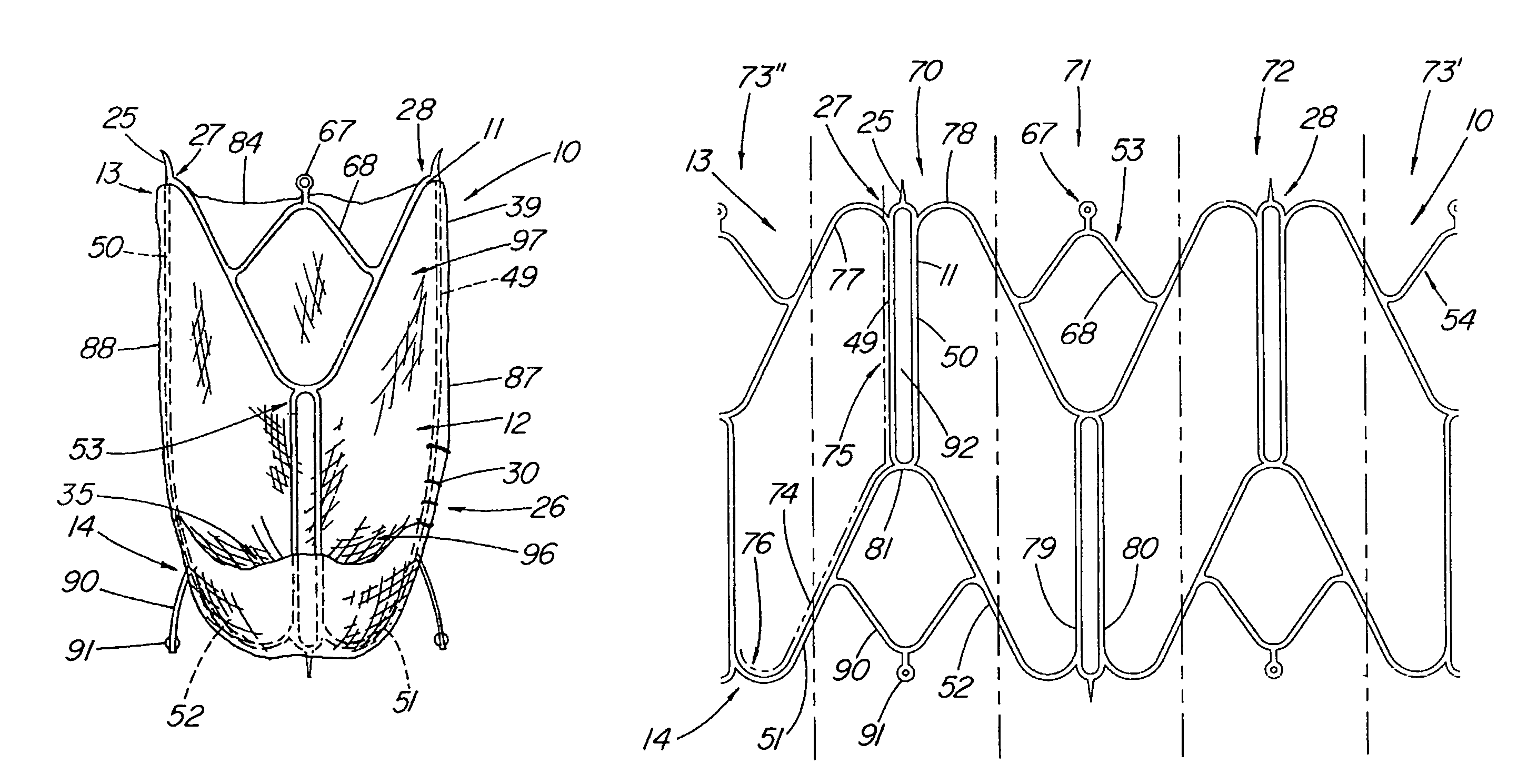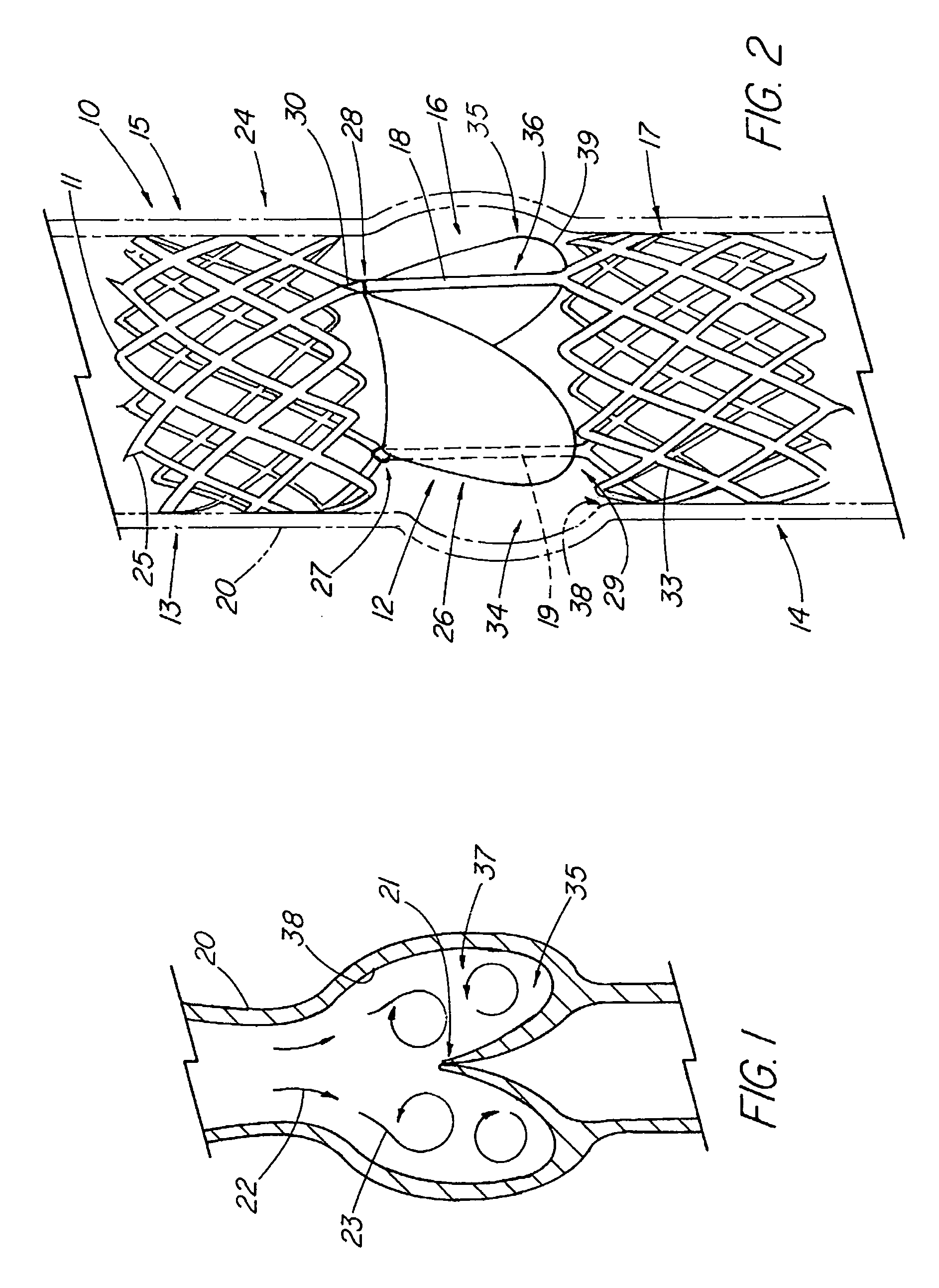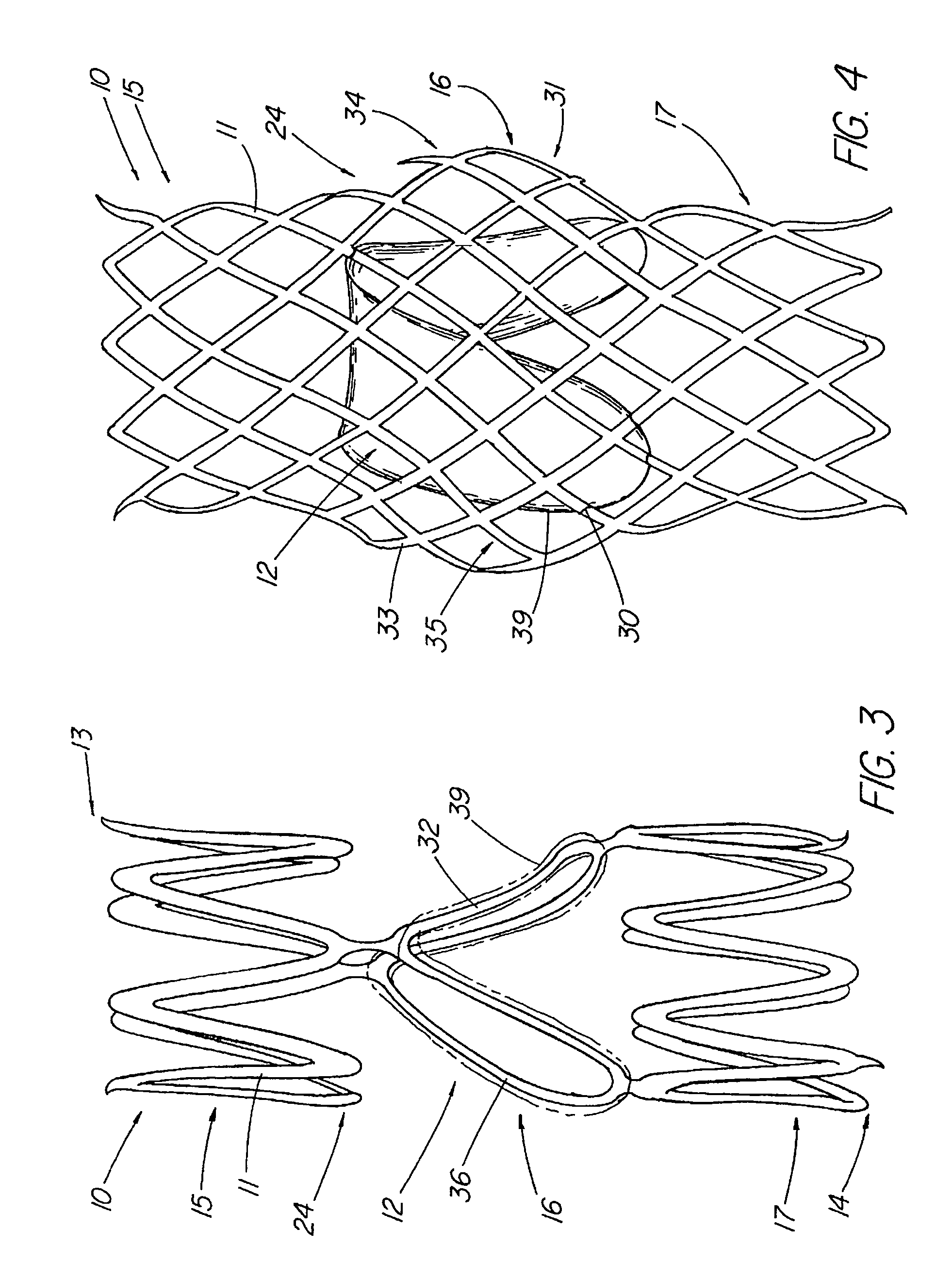Artificial valve prosthesis with improved flow dynamics
a flow dynamics and artificial valve technology, applied in the field of medical devices, can solve the problems of common problems such as thrombosis around the valve structure, and achieve the effects of facilitating blood clearing, increasing flow velocity, and more turbulent flow
- Summary
- Abstract
- Description
- Claims
- Application Information
AI Technical Summary
Benefits of technology
Problems solved by technology
Method used
Image
Examples
Embodiment Construction
[0033]The present invention, selected examples of which are illustrated in FIGS. 2-9, 11-20, comprises a collapsible, self expanding or otherwise expandable artificial valve prosthesis 10 that is deployed within a bodily passageway 20, such as a vessel or duct, of a patient typically delivered and implanted using well-known transcatheter techniques for self-expanding prostheses, the valve prosthesis having a first or proximal end 13 and a second or distal end 14, with the normal, antegrade fluid flow typically traveling from the distal end to proximal end of the prosthesis, the latter being located closest to the heart in a venous valve when placed within the lower extremities of a patent. The valve prosthesis 10 comprises a support structure 11 and a valve structure 12, such as the illustrative valve structure, attached about the support structure and configured to selectively restrict fluid flowing therethrough by closing with changes in the fluid pressure differential, such as in...
PUM
 Login to View More
Login to View More Abstract
Description
Claims
Application Information
 Login to View More
Login to View More - R&D
- Intellectual Property
- Life Sciences
- Materials
- Tech Scout
- Unparalleled Data Quality
- Higher Quality Content
- 60% Fewer Hallucinations
Browse by: Latest US Patents, China's latest patents, Technical Efficacy Thesaurus, Application Domain, Technology Topic, Popular Technical Reports.
© 2025 PatSnap. All rights reserved.Legal|Privacy policy|Modern Slavery Act Transparency Statement|Sitemap|About US| Contact US: help@patsnap.com



